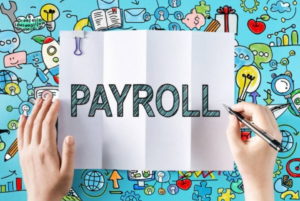What is the Difference Between Holiday Pay and Annual Leave?

In NZ employees are entitled to Annual Leave after 12 months employment and every 12 months after that, while Holiday Pay generally accrues as 8% of gross pay every pay period.
The following explanations are simplified and there will be some exceptions. Also, the terminology on payroll and payment for holidays in NZ can vary. For Example, the terms Accrued Leave, Earned Leave, Holiday Pay, and Annual Leave can be interchangeable in different payroll systems.
The terminology in this article specifically refers to Xero Payroll.
In NZ Xero Payroll, Annual Leave is represented by standard hours in the Employment Tab - the hours in the Employment Tab represent 1 week.
In NZ Xero Payroll, holiday pay is held in $.
As of September 2024 Xero has announced they are introducing Annual Leave to be shown in days/weeks instead of hours. This is being introduced to new signups first and then will be rolled out to existing users. It will mean that if Standard Hours change, there may not need to be a manual adjustment to the hours for Annual Leave.
What is Annual Leave?
I find it useful to consider Annual Leave in two parts.
1. Keeping track of the balance of how much Annual Leave an employee has, in Weeks/Days.
2. Ensuring that when Annual Leave is taken it is paid out at the correct rate, which might not be the standard hourly rate.
Keeping Track of Annual Leave Balances
Up until an employee has worked for 12 months they don’t have Annual Leave. The minimum entitlement is 4 weeks per year and the leave entitlement gets added all at once - first after 12 months of employment, and then every 12 months after that (there are some exceptions). In Xero Payroll the 4 weeks is represented in hours. An employee who has 40 hour week showing in their Employment Tab will have a 4 week annual leave accrual represented in Xero by 160 hours.
How much Annual Leave the employee has, is held in Weeks/Days not in a $ value. Sometimes it’s not straight forward to determine what constitutes a week or a day of Annual Leave for an employee and the government website has guidance on working that out.
A balance of Annual Leave is made up of any 12 monthly accruals, less any Annual Leave taken by the employee. If the employee takes Annual Leave before they’ve worked for 12 months, or is taking more Annual Leave than accrued, then in Xero Payroll this is called Annual Leave in Advance.
Ensuring Annual Leave is paid out at the correct rate
When an employee takes Annual Leave, the $ rate paid out is calculated as the higher of either Ordinary Weekly Pay (OWP) or Average Weekly Earnings (AWE) over the last 52 weeks. If an employee has been working more hours on average than their standard hours as shown in their Employment Tab, in Xero Payroll their hourly rate will increase above their normal hourly rate for the hours being paid out as Annual Leave.
If the employee has been working less than their standard hours, the hourly rate for Annual Leave will not drop below their normal hourly rate.
What is Holiday Pay?
In Xero Payroll Holiday Pay generally accrues every pay period (weekly / fortnightly / monthly etc) as 8% of gross earnings ($).
In Xero Payroll when Annual Leave is accrued after 12 months (the anniversary date), the Holiday Pay balance is automatically reversed out and returns to Nil. Effectively the $ value 8% of gross earnings that has built up over the year is replaced by the 4 weeks of Annual Leave.
In the next pay period after the anniversary holiday pay ($) will start to accrue again and will continue to build up for the next 12 months. After another 12 months, more Annual Leave will be accrued (4 weeks) and the Holiday Pay balance ($) will go back to Nil again. And so it goes on.
In Xero Payroll Holiday Pay is not usually paid out during the term of employment, but there are some exceptions. The most common exception is for Casual or Short Term Fixed employees who might have their Holiday Pay paid out every pay period in addition to their normal pay. There are other exceptions as well.
Why doesn’t Holiday Pay $ always convert into Annual Leave Days/Weeks?
A Holiday Day $ value is just that, and it’s never open to interpretation – its a $ amount.
However, the $ value of an employees Annual Leave can change especially if their work pattern changes. The value of an Annual Leave balance can only be determined at the time Annual Leave is taken, and for employees on variable hours or where hours have changed, the value can vary significantly.
Here’s an example:
An employee works part time for a year. When the Annual Leave is accrued at 12 months, the employee was working 20 hours a week at $25 per hour. Therefore in Xero Payroll the accrual would be represented by 80 hours (4 weeks x 20 hours).
Then for example after another 9 months the employee changes to full time and gets a pay rise to $35 per hour. At this point a manual adjustment is required in Xero Payroll to update their Annual Leave balance to 160 hours (4 weeks) based on their new work pattern. This is assuming the employee has not taken some Annual Leave already. The point is, whatever the balance of Annual Leave is at the time the work contract changes, it needs to be checked that it still represents the same number of hours. If their balance when the work contract changed was 2.5 weeks (represented by 50 hours), then with the new contract at full time, 2.5 weeks would need to be represented by 100 hours.
Then for example they work for another 9 months.
At this point in time (the second anniversary), they will be due another 4 weeks annual leave represented by 160 hours. The value of that 160 hours would be at least 160 x $35. However, the value of their holiday pay at that point will be less, as it's 8% of their gross earnings, and most of the year they were only working 20 hours a week.
Why is both Annual Leave and Holiday Pay due when employment ends?
After 12 months there will be an Annual Leave balance, and a Holiday Pay balance. When employment ends both are paid out. If Annual Leave has been paid in advance (before it was earned), then in Xero Payroll the $ paid out will show as a deduction in the final pay.
If you have more questions about Xero Payroll, get in touch with Helen at Living Business.
